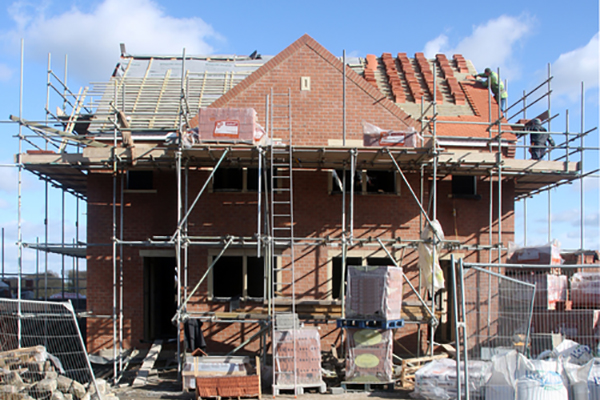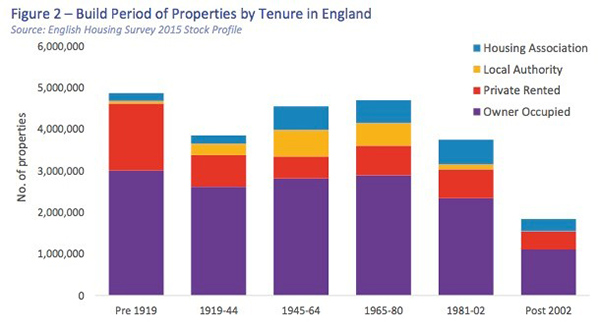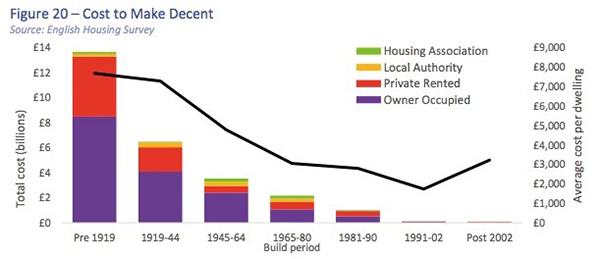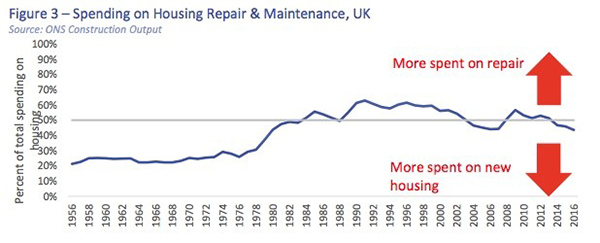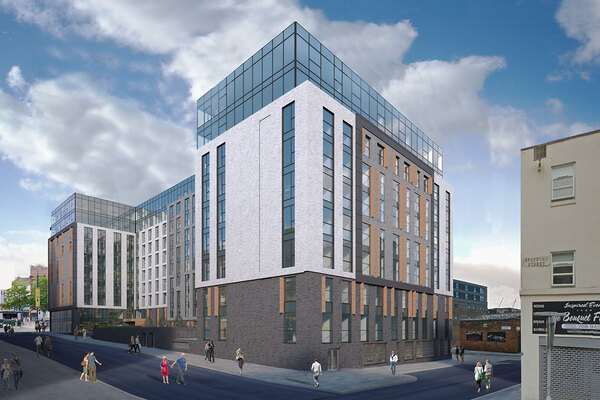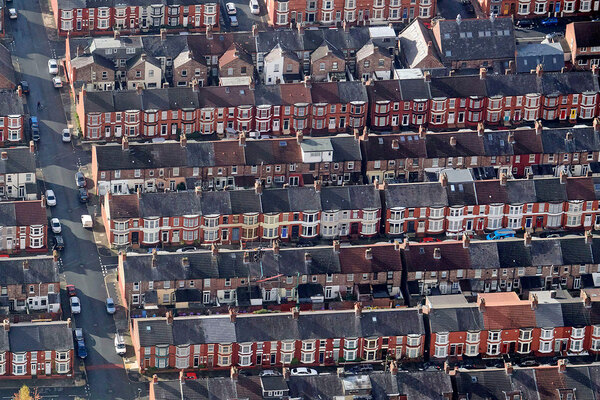You are viewing 1 of your 1 free articles
 Jules Birch
Jules BirchA system under strain
Concerns about the quality of new build homes show new solutions are needed, says Jules Birch
 Jules Birch
Jules BirchBeneath the immediate crisis about a lack of new homes lies a long-running one about the homes that we have already built.
It’s hard to look much beyond the stat in a report published on Friday by the Local Government Association (LGA) that new homes built today will have to last 2,000 years at current rates of demolition and replacement.
Unless the output of the likes of Barratt and Taylor Wimpey is really going to stand for as long as some of the glories of Ancient Rome, something clearly does not add up.
This graph shows the age of the stock broken down by tenure:
The report by Residential Analysts found that large numbers of homes across all tenures are not of appropriate quality, with the private rented sector representing the biggest cause for concern, with problems such as damp and poor energy efficiency concentrated in the oldest stock.
The number of homes failing to meet the Decent Homes Standard has been dropping in recent years, but the total cost of bringing them up to scratch is still estimated at £27bn, of which just £2bn is for social housing.
While improving owner-occupied homes would cost £17bn, private landlords face a bill of £8bn, with the work required on pre-1919 homes costing around 80% of annual gross rental income.
Those sorts of problems with 100-year-old homes hardly bode well if they will have to last two millennia but things do not look much better when it comes to new homes.
That’s despite spending £27bn a year on repairs and maintenance, or almost as much as the £35bn we spend on building new homes by the time you take DIY and the black economy into account.
And this graph shows that the shift in spending coincided with the decline in new council housebuilding:
Overall, says the report, we should look much more closely at the type, distribution, quality and price of the homes we already have and how they meet or fail to meet housing needs.
“That would allow us to ensure that new housing is appropriate and makes a positive contribution to the total housing stock rather than just adding to the headline number of new homes being built,” the report reads.
However, as the government focuses on the need for new homes, there are worrying signs of a system that is under strain.
“The proportion of people saying they are dissatisfied with their new home or would not recommend their builder to a friend has been rising.”
This year has already brought a new build leasehold scandal, increasing press coverage of defects and complaints that house house builders have (surprise, surprise) been charging a premium for Help to Buy Homes.
And customer dissatisfaction with new build homes is rising even on the Home Builders Federation’s own measures.
After an improvement following the recession, the proportion of people saying they are dissatisfied with their new home or would not recommend their builder to a friend has been rising for the past four years.
The report does not knock house builders for the sake of it and actually defends them against the common charge that they are building the smallest homes in Europe (more up-to-date data puts us in the middle of the European rankings).
However, some of the largest new home sizes “are found in the most expensive and supply-constrained markets” and the report says house builders are coming under growing pressure to balance demand for new homes against their ability to deliver on quality.
It warns: “The current housebuilding model and a focus on the absolute numbers of new homes at the expense of quality risks undermining the longer-term benefits of new housing supply.”
With new building for sale constrained, supply is desperately needed from elsewhere. While the build-to-rent sector is building some high-quality homes, the report concludes that significant overall improvement in the quality of private rented sector homes is unlikely without further intervention and incentives.
“A ‘national renaissance’ in council housebuilding must be a key part of a solution.”
As for social housing, it’s hard to argue with the LGA’s conclusion that a “national renaissance” in council housebuilding must be a key part of a solution to the twin crises of supply and quality.
Or that, if central government is serious about tackling them, it must let councils borrow to build and keep 100% of the receipts from any homes they sell.
Jules Birch, award-winning blogger
